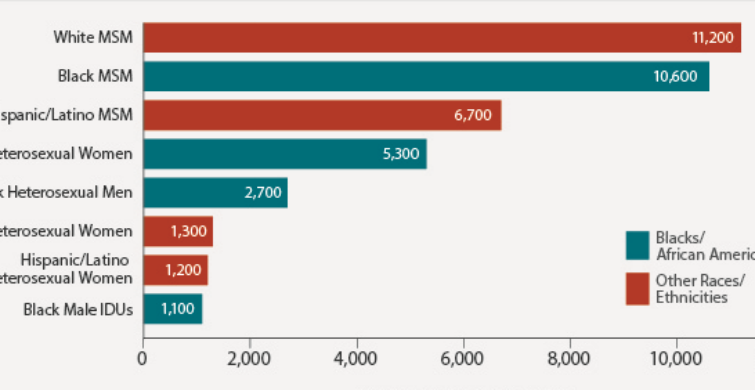Announcing HIV diagnoses, updated data on persons living with HIV

HIV/AIDS is an ongoing epidemic in the United States. The Centers for Disease Control and Prevention (CDC) collects, maintains and publishes data on the 1.1 million people living with HIV, as well as new diagnoses reported every year. On PolicyMap, under Health and Infectious Disease, you can now view the rates of HIV incidence and prevalence per 100,000 people. New to PolicyMap, HIV incidence data are available for 2008 through 2012. With these data, you can explore which communities continue to be most affected by the epidemic, where these communities are located and how the rate of infection has changed over time.
The CDC notes that the rate of incidence of HIV is higher in certain risk groups; namely substance users, youths aged 13-24, African-American individuals, and men who have sex with men. The following chart displays data on new infections in 2010 for each risk group.

By combining the HIV incidence and prevalence datasets with other datasets in PolicyMap, we can begin to understand the intersections of HIV occurrence with other factors on a more macro level. For example, we see that Georgia is a state with one of the highest rates of HIV incidence per 100,000 people:
If we focus on Georgia, we can view additional layers that relate to HIV risk and health outcomes, including rate of uninsured individuals, predominant race, percent of population in poverty, age, and unemployment. By doing so, we can start to get a more robust sense of how demographics, economics and public health might overlap in this location.
Parts of the state have an estimated rate of uninsured individuals that is drastically higher than surrounding states. Taken in combination, these environmental factors can assist health care and service providers, researchers and community members in having a more holistic view of how this epidemic impacts individuals of their community.